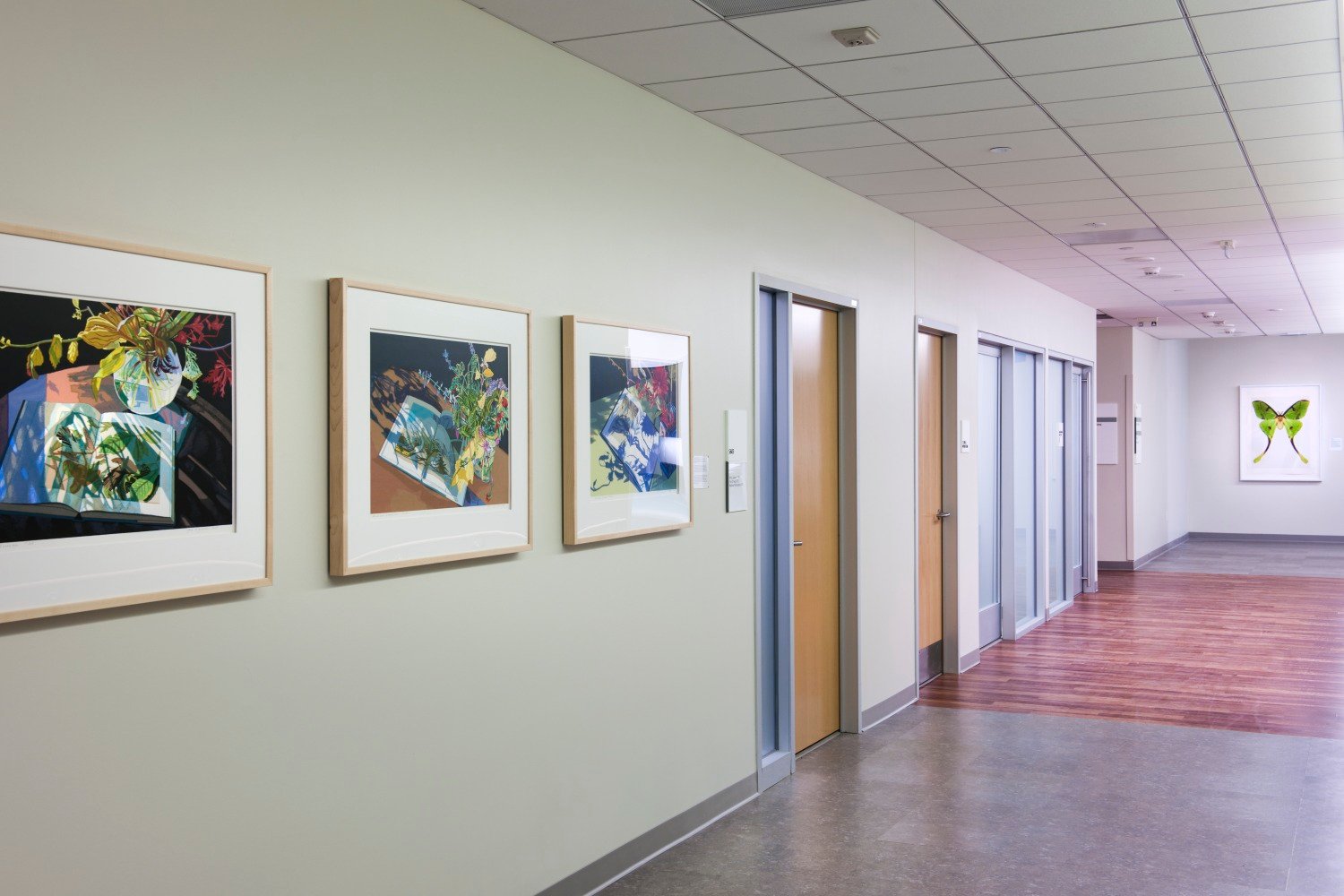
The healing power of nature has been proven to increase patient response to treatment, encourage a feel-better mentality and increase staff satisfaction in their job. An eye toward integrating natural light, spatial layout, bringing natural elements into interior finishes, and allowing for off-stage clinician respite are all facets of providing positive distractions inside the facility.
Contemplative gardens, green roofs, preserved wetlands with boardwalks and outdoor dining options add to the healing effect, whether viewed from inside by patients or appreciated outside by visitors and staff.
Sunlit spaces with views to the outside orient patients and visitors, enhance wayfinding and offer a positive distraction. It also gives staff, who are often at the hospital for long hours, a sense of time to see the outdoors and determine day vs. night.
Art That ‘Envelops’
Art plays an important role in both providing a positive distraction and being a three-dimensional wayfinding element. Ideally, a work of art allows a temporary escape as the viewer learns more about the artist and the meaning of a piece. It also can provide a sense of location: “Oh, I know where I am now; I passed that sculpture when I picked up Mom from her follow-up visit.” The placement of a large piece is important since it will be viewed by different audiences from different vantage points. A well-placed commissioned piece of art can define a space and become an icon for the facility.
Play Areas
Having dedicated space for young families to congregate during waiting times, whether that is near the ED or an outside play area, helps alleviate stress for many. Families have a space designed for their needs with safe playthings while people without children are afforded a more adult space where they can wait quietly, and hospital staff have discrete areas for suggesting where people can wait.
See the Thought Leadership book which accompanied this article from Medical Construction + Design.

